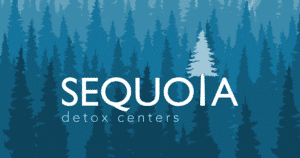Heroin Addiction And Abuse
Addiction To Heroin
Heroin is a potent Opiate with an intense effect on the brain’s reward system. The intensity of this effect is a reason why Heroin addiction and abuse can be so widespread.
Heroin rigs the brain’s reward system by influencing the production of feel-good chemicals, such as dopamine and endorphins.
Out of everyone who tries Heroin for the first time, nearly 1 in 4 becomes addicted.
In normal circumstances, the brain releases these chemicals to reward behavior necessary for survival, like eating, and to help people cope with pain.
The brain quickly links Heroin to the activation of these chemicals in the brain’s reward system. Eventually the user becomes addicted and can’t function without the drug. Additionally, the withdrawal symptoms of Heroin make it hard for users to quit on their own.
Some signs that an addiction has formed include:
- Continuing use despite Heroin-related problems
- Trying and failing to quit or cut down use
- Having persistent cravings
- Building a tolerance to Heroin
- Experiencing withdrawal or feeling “junk sick”
Needing escalating doses of Heroin to get high or starting to inject the drug are strong indications of an addiction. Once addicted, what may have once seemed like a cheap way to have fun becomes a necessary habit to function in day-to-day activities.
I ended up using Heroin for about 5 years, sniffing it. But I was seeing all the people I was hanging out with who shot it totally jammed, and I was basically feeling normal [because] I now built a tolerance. I was now using Heroin, a $150 a day habit, to feel normal.
Online Addiction Counseling
Get professional help from an online addiction and mental health counselor from BetterHelp.
- Access to Therapy 24/7
- Easy Online Scheduling
- 20,000+ Licensed Therapists
Paid Advertising. We may receive advertising fees if you follow links to the BetterHelp site.
Understanding Heroin
Heroin is a highly addictive Painkiller synthesized from Morphine, which comes from the seeds of the poppy plant. Because poppy plants are used to make Opium, any drugs derived from them are considered Opiates. Both Heroin and Morphine are Opiates.
Heroin is also known by names like Funk, Smack, or H Street. Heroin is often combined with dangerous additives like Morphine or the powerful pain reliever Fentanyl.
Approximately 4 million Americans have tried Heroin at least once in their lifetime. Symptoms of Heroin addiction and abuse can include severe itchiness, depression, and collapsed veins.
What Does Heroin Look Like?
Not all Heroin looks the same. It comes in several different forms and can be abused in several different ways, including snorting, smoking, and injecting.
Fine white powder
This is the purest form of Heroin.
Brown or black powder
This form of Heroin gets its color from additives and is more common than pure Heroin.
Black tar Heroin
This form of Heroin comes as a black, sticky gel.
Heroin Effects
Heroin users have described the drug’s high as an intense feeling of well-being. When users inject Heroin, they often experience a “rush” from the drug reaching the brain so quickly.
The rush from intravenous Heroin use lasts about 2 minutes. Intravenous users have likened the rush to an orgasm in terms of pleasure. As Heroin travels through the bloodstream, the high lasts for 4 to 5 hours.
The general effects of using Heroin include:
- Contentment
- Reduced anxiety
- Relieved tension
- Drowsiness
- Apathy
The effects of Heroin can seem harmless to those who are experimenting with the drug. Although it can produce some dizziness and drowsiness, these effects may feel enjoyable. Unlike with substances such as alcohol or Ecstasy, there generally isn’t a hangover or comedown from initial Heroin use — which is an attractive benefit to new users and contributes to Heroin addiction and abuse.

Break free from addiction.
You have options. Talk about them with a treatment provider today.
What may seem like harmless or occasional Heroin use often devolves into addiction because tolerance builds quickly. Eventually, users cannot feel normal without taking the drug because their brains cannot produce natural amounts of dopamine on their own. As users increases their doses, they become at greater risk of fatal Heroin overdose.
Signs of a Heroin overdose include:
- Shallow breathing
- Dry mouth
- Tongue discoloration
- Very small pupils
- Slow pulse
- Bluish lips
Looking for a place to start?
Join the thousands of people that have called a treatment provider for rehab information.
Free and confidential
Available 24/7
Access to professional treatment
Heroin And Other Drugs
People who abuse Painkillers have a higher risk of experimenting with and becoming addicted to Heroin. Painkillers like OxyContin are classified as Opioids because they are Synthetic, Opiate-like substances activating the same receptors in the brain as Heroin.
Painkillers have similar effects to Heroin, but these pills can be expensive and hard to acquire. Many people who become addicted to Painkillers turn to Heroin because it is cheaper and more accessible.
The way Painkillers are abused can lead to future Heroin abuse as well. Some people crush up Painkillers to snort or inject, which introduces users to methods of administration commonly used in Heroin abuse.
Close to 50% of young people who use Heroin reported abusing Painkillers before moving on to Heroin. Some speculate that Heroin may be easier to obtain than Painkillers.
Featured Centers Offering Treatment For Heroin Addiction


Heroin Abuse Statistics
156K
first time users
Approximately 156,000 Americans used Heroin for the first time in 2012. It is one of the most dangerous drugs, and the number of first-time users has nearly doubled over the past decade.
500K
sought treatment
Close to half a million people received treatment for their Heroin addiction in 2012.
20
percent of youths
20% of youths aged 12 to 17 reported that they saw either moderate, slight, or virtually no risk in using Heroin.
Check if my insurance covers rehab
Addiction Center is not affiliated with any insurance.
Kicking The Habit With Help
Heroin is one of the most addictive substances in existence, and an addiction to this drug is hard to overcome without help. The good news is that there are a variety of treatment options to help individuals struggling with Heroin to come off the drug safely and learn new ways to manage unpleasant emotions effectively. If you or someone you care about is suffering from a Heroin addiction, contact a treatment provider today.
Published:
Author
Jeffrey Juergens

-
Jeffrey Juergens earned his Bachelor’s and Juris Doctor from the University of Florida. Jeffrey’s desire to help others led him to focus on economic and social development and policy making. After graduation, he decided to pursue his passion of writing and editing. Jeffrey’s mission is to educate and inform the public on addiction issues and help those in need of treatment find the best option for them.
- More from Jeffrey Juergens
Reviewed by Certified Addiction Professional:
David Hampton

A survivor of addiction himself, David Hampton is a Certified Professional Recovery Coach (CPRC) and a member of the National Association of Alcohol and Drug Abuse Counselors (NAADAC).
- More from David Hampton
Sources


Recovery Starts Today
Call Now For Addiction Support



Newport Academy – Teen Rehab Center
Port Townsend , WA


Sequoia Detox Centers
Spokane Valley , WA



Moonlight Mountain Recovery – Nampa
Nampa , ID

Bayside Marin Treatment Center
San Rafael , CA

Newport Institute for Young Adults
Sunol , CA

The Camp Recovery Center
Scotts Valley , CA

Moonlight Mountain Recovery
Pocatello , ID



Tarzana Recovery Center – TRC
Tarzana , CA
